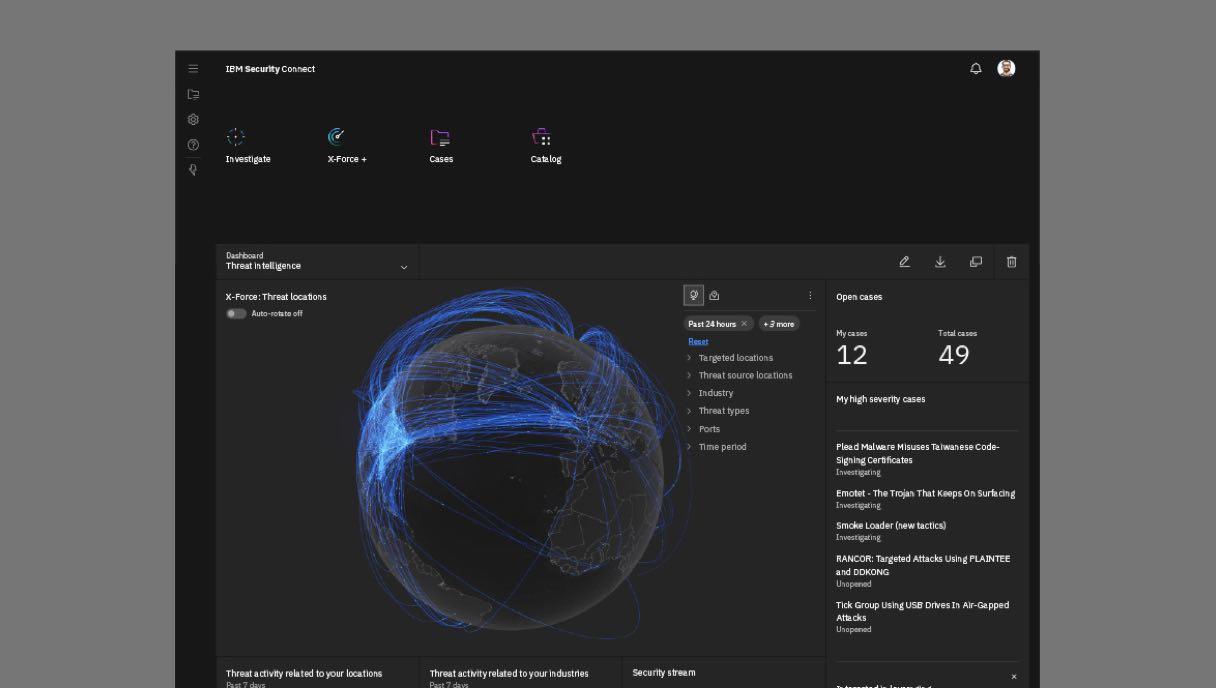Table Of Content

Secondly, the timing of this iteration presented a ripe opportunity for the design bridges across IBM to be strengthened. Historically, designers have been scattered across disparate pockets (products, services, corporate functions, brand, marketing) and across the globe. Along with many other efforts happening now, the Design Career Playbook is an artifact that helps us build a singular design voice and community. Design PrincipalDesign Principal is the highest non-executive technical role in the IBM designer career framework. They are top technical practitioners who take on leadership positions to fulfill specific missions in their business unit.
Featured outcomes
If you are looking for more on DesignOps, be sure to join the conversation and community on the #ibm-designops Slack channel. The application of the IBM color palette brings a unified and recognizable consistency to the array of digital products and interfaces. This color pallette applies to data visualization, as well, but isn’t restricted to appearance only; it decreases recognition times, conveys meaning and helps users make faster, more informed decisions.
Now it’s moreimportant than ever.
4 min read - Explore 4 ways that generative AI technologies will significantly accelerate digitalization initiatives in the manufacturing industry. Coordinate complex technical projects in an agile way while striving to deliver excellence. Join a leading team on technical sales and engage with top clients around the world. IBM is committed to creating a diverse environment and is proud to be an equal-opportunity employer. IBM is also committed to compliance with all fair employment practices regarding citizenship and immigration status.
Complex, multi-faceted challenges demand diverse, multi-talented teams.
Noyes’ experience at Harvard was unlike the other four members of the Harvard Five. When he arrived at Harvard, the school was still under the influence of the Beaux-Arts architecture movement – hardly the modernist influence that the other four received. However, after meeting guest lecturer Le Corbusier in the school library, his architectural outlook changed entirely. In his junior year at Harvard, he traveled to Iran for an archaeological expedition. Upon returning to the school, Noyes found that Harvard had undergone a complete revolution. Gropius and Breuer had already arrived there, and with them came a new modernist spirit at the school.[2] In 1938 he received his architecture degree from Harvard Graduate School of Design.
What I hoped to get out of the internship and how it helped me in the next step of my career
Aesthetic is defined as the philosophical theory or set of principles governing outward appearance or actions. This characteristic, while subtle in its application, is essential to the effectiveness of any experience. We must put care and craft into every experience if we expect any confidence or consideration in return. Today, as with technology, the talent, techniques, thinking and tools of design have become more and more abundant and accessible to all.

Check out the deployable architectures that are available in the IBM Cloud catalog. Imposter syndrome was starting to creep up on me, but going through Patterns with 55 other people in the same position as I am really made me feel like I am not alone in this journey. I was able to practice leading design thinking sessions, give playbacks to senior designers and executives, and collaborate in a multidisciplinary team.

Written by Jenny Price
IBM designers are people who hold a deep conviction about bringing a human-centered lens to our solutions while intentionally crafting digital and offline experiences — often in complex systems. We continuously observe, reflect, and make to infuse the needs and realities of the end users in our problem solving. Not all designers in the world see their jobs that way, but at IBM, this mindset is deeply integrated into the ethos of the design community. To create the organizational conditions for our designers to continue this role, grow their skills, and increase their influence, IBM’s design program has invested in creating a design career framework that opens new doors for the designer and the design profession at large. Jenny is an accomplished design leader, designer, strategist, and has extensive experience leading large-scale distributed design teams. DGC drives innovation at IBM, one of the enterprise digital information technology leaders in the world, and creates the next generation IBM.com experiences to help users while driving business results.
Caring about contrast means caring if users will be able to read your chart on their screens, even in low light and if you use shades of colors like light grey. Well-chosen colors reduce the time for viewers to gain insights and help them understand the message sooner. Rely on categorical palettes if you want to maximize contrast between data that doesn’t have an inherent relationship, while sequential palettes are good to show relationships or hierarchies between data. Reinforce color meaning with other strong visual features, like shape, line or pattern, to make the focal point immediately recognizable. To further illuminate what DesignOps is at IBM, we asked a number of DesignOps practitioners from fully dedicated to part-time to share their experiences and tell us why DesignOps is valuable to their teams and IBM’s business. Shaping a sustainable culture of design through strengthening our design practices & community.
Athletics devises grid-system-based visual identity for IBM TechXchange - Design Week
Athletics devises grid-system-based visual identity for IBM TechXchange.
Posted: Mon, 16 Oct 2023 07:00:00 GMT [source]
Candidates for Design Principal were nominated by their business unit and submitted an extensive application form, portfolio of work, and executive references which were peer-reviewed by the IBM Design Leadership Review Board, a council of executive-level design leaders. Additionally, cultivating design culture and community is a must-have for any DesignOps leader to nurture and help bring to life. Our mission within DGC is to elevate the culture of design and professional practice, inclusive of all IBM Design disciplines and designers, growing and supporting an engaged, inspired, world-class community of IBMers. Since joining IBM in September 2015, he has led many successful projects in digital and experience transformation. He has handled projects across domains, of different magnitudes with varied culture and geographies.
A by-product of every experience with IBM should be time—time saved or time well-spent. IBMers believe in progress—that by applying intelligence, reason and science we can improve business, society and the human condition. This discovery led us to create our second proposal, which addresses some key pain points from our As-Is scenario.
What they wanted from us was a tool that could be built and used by designers, rather than a “big picture” solution. Our proposal was rejected and we were back to the drawing board with one week left to work. A process improvement solution to ensure that accessibility is built into the product throughout the entire product life cycle. After synthesizing our research findings, we created an As-Is Scenario Map to align on how accessibility is currently being brought up within the product life cycle. By having a visual timeline to reference, we were able to identify gaps in the cycle where we could potentially introduce a solution. My team’s project was sponsored by IBM’s Accessibility team, based here in Austin.
When designing IBM’s data visualization, be sure to maximize accessibility and harmony, but also keep an eye on cultural and psychological contexts. It was one of the earliest and most essential structural artifacts that built momentum to create a sustainable culture of design. One hundred million dollar investment to build the design program and practice? Design Principal (DP) is the highest non-executive, individual contributor career level for designers at IBM.
From attracting and retaining customers to driving commerce and managing operations, IBM iX uses advanced design methodologies to unlock the potential of technologies from Adobe, Apple, IBM, Salesforce, SAP and many more. This requires a new kind of business partner with the ambition and imagination to drive world-changing progress. We’re bridging data with previously disconnected experiences to accelerate how our customers get their jobs done. By augmenting their workflows and providing rich insights at just the right moment, we’re turning pain points into moments of delight.
This book explains how this system uses new innovations and traditional IBM Z strengths to satisfy growing demand for cloud, analytics, and open source technologies. With the IBM z16 as the base, applications can run in a trusted, reliable, and secure environment that improves operations and lessens business risk. The IBM Z platform is recognized for its security, resiliency, performance, and scale. It is relied on for mission-critical workloads and as an essential element of hybrid cloud infrastructures. The IBM z16 server adds capabilities and value with innovative technologies that are needed to accelerate the digital transformation journey. Michael Turri works as an experience design, brand and marketing consultant in Paris.
There is not a “one size fits all” approach to a DesignOps practice outside or inside IBM. Your organization’s size, maturity, complexity and painpoints will influence who is responsible for leading DesignOps, how they operate and who they report to, whether it is a dedicated role or fully-scaled DesignOps team. We now have more than 2,500 practicing designers working in literally every part of the IBM company. As the scale and complexity of our design teams and organizations has grown, it has required us to take a more sophisticated approach to how we operationalize design. We do this in order to make sure we are working in the most efficient and effective way possible, and are generating consistently great outcomes for our users and clients.
The IBM z16 is a state-of-the-art data and transaction system that delivers advanced capabilities, which are vital to any digital transformation. The IBM z16 is designed for enhanced modularity, which is in an industry standard footprint. During the time The Eames Office was cultivating their interest in communications, data processing and computing were still essentially new phenomena; largely the domain of governments and large corporations. Indeed, the implications of this technology were only beginning to enter popular culture. IBM was the dominant force in early computing in America, a subject that was at best misunderstood, if not somewhat feared by the general public. Both the Eameses and Noyes shared a commitment to modernist design principles, including functionality, simplicity, and human-centered design.

No comments:
Post a Comment